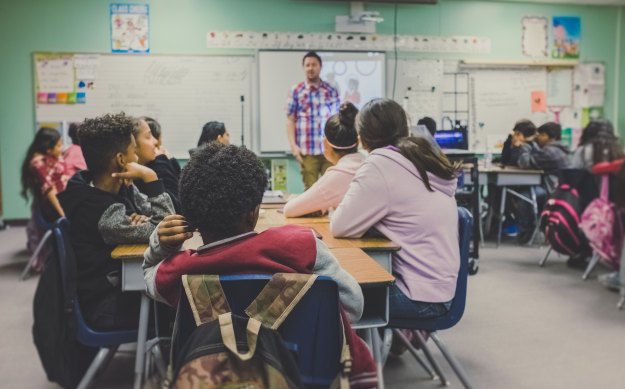
You’ve Been There, Right?
Teachers – here are three classroom experiences that I truly hope you’ve had:
- The absolute-rock-bottom-I-have-nothing-left-in-my-toolkit-horror of being in front of a class as control slowly and surely slips from your fingers.
- The absolute ecstatic joy of finding the class fully engaged with the task you set them when you return from a 10-minute trip to the photocopier.
- The heartwarming, yet sometimes funny feeling of being called ‘mum’, ‘dad’, or even ‘nan’ by one of your pupils. Or all of them.
And why do I wish this (and other similar feelings) upon you? Because they’ll help us to think about effective learning relationships.
Horror, Joy & Humour
You really know the value of classroom relationships when they fall apart (see 1. above). I once had a Year 4 class. Tough kids; poor, wily, wiry, streetwise, emotionally honest and very big-hearted. But I didn’t see it. I didn’t spend time getting to know them – really getting to know them – as individuals or as a group. The pressure was on for results; the focus on delivering content not developing connections. And so they slipped through my fingers. I tried valiantly to teach them how to spell instead of first teaching them how to care.
With my other classes I did take the time (see 2. above). Trust was there; mutual respect too, and a clear understanding of boundaries. We could do more and achieve more. When I left the room the children kept learning; they stayed on task. And from time to time they would make the slip of calling me ‘mum’. (I did once dress up as Widow Twanky for panto day but that is another story. With photos.)
Take the Time
Quality learning relationships underpin quality teaching and learning. But building them takes time – time which gets pinched by packed curricula and a relentless drive for publicly endorsed results. What if we took the time to get to know our pupils and helped them get to know each other? Do you think time invested like this would actually lead to more effective learning and better results? I believe it does. I know it does. It’s implicit in respected educational research. Relationships built well, build better learning. So how, with the future in our hands, should we develop quality learning relationships with, and between, our pupils; and with/between our colleagues?
Quality Relationships
An ongoing process for starting, developing and sustaining relationships:
- Get to know yourself;
- Get to know the other person;
- Communicate well; and
- Troubleshoot when needed.
And some suggestions for getting started:
- Know yourself. List three words that describe you; three things you like and three things you’ve learned in the last week.
- Know the other person. Find out three words that describe them; three things they like and three things they’ve learned in the last week.
- Communicate well. Share the above. Listen. Only think about what you are going to say next once the other person has finished speaking.
- Troubleshoot. When relationships break down it’s usually trust or communication in the spotlight. If things go wrong, seek help, own up, be honest, forgive, apologise, move on, learn.
So next time you feel rock-bottom-horror; ecstatic joy; heartwarming humour or any other feeling that’s linked to your educational relationships, ask yourself: What is this telling me about the quality of those relationships? How effective are they? What might I need to stop doing, start doing or simply continue doing to make them the best they can be?

